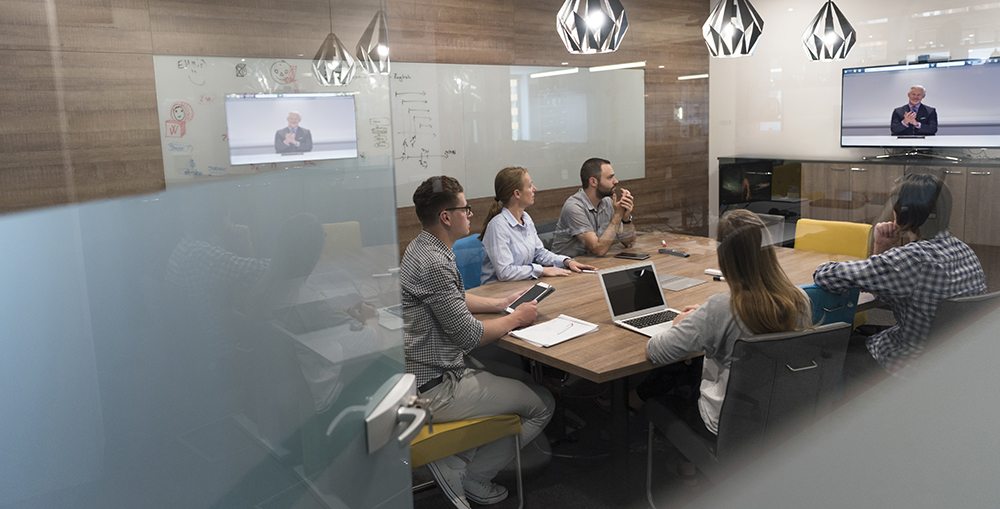


過去30年間でテクノロジーは急速に進歩しました。インターネットの速度は向上し続け、それに伴いビデオも進化しています。テクノロジーの新たな進歩は、マーケターによる将来のビデオマーケティングの活用方法にパラダイムシフトをもたらす道を切り開いています。
The internet is not the only change in speed. New computers, programs, smartphones, and other digital devices grow increases faster than ever before - some call our modern era the "exponential age." With teenagers and adults alike seemingly glued to their devices, getting a quick fix of information.
In 2002, only 9.1% of the world's population used the Internet regularly, tallied at 569 million people.
Ten years later, an impressive 2.27 billion people used the Internet regularly, calculated at 33% of Earth's most advanced inhabitants.
Average time spent on the World Wide Web has skyrocketed above more than 90% in the last few years, as well, shooting from 46 minutes per day all the way up to 240 hours each day.
YouTubeのおかげで、インターネットに接続できる人なら誰でも、あらゆる趣味の動画を何百万、何十億本も視聴できます。YouTubeが動画をシームレスにアップロードし、ブログに投稿することを目的として開発されたことに驚かれるかもしれません。ブログでは大容量の動画をホストできず、読み込み速度も遅く、ユーザーエクスペリエンスが制限されていたからです。
しかし、ほとんどのネットワークはこれに気づかず、素材を元のメディアに限定することを選択しました。
For example, a clip created by the cast of Saturday Night Live, Lazy Sunday, was free for viewing on YouTube, uploaded near the end of 2005. After amassing an impressive 5,000,000 views - this was 12 years ago, when millions of views meant a lot - parent company NBC removed Lazy Sunday from the site. Other media outlets followed suit, either pulling what they initially placed on YouTube, or not uploading it to the public site at all.
Instead, YouTube began to collaborate with networks. Independent users would upload clips, compilations, behind-the-scenes shots, and episodes. Some copyright owners pulled the clips, some within hours of uploading, with other clips lasting years before being removed from the site. In efforts to keep content on YouTube, the unique social media site started signing deals with networks. The video sharing website joined forces with media giant CNN in 2007, in which candidates running for the 2008 presidential election were asked questions, then uploaded on YouTube
Today, clips from several American late night shows populate the site, including the likes of Jimmy Kimmel Live. Other celebrities have their channels, either airing their original programming or sharing extra content not seen on existing TV programs. Even better for the public's interest in some shows being broadcasted exclusively on YouTube, allowing people with nothing but Internet connections to consume loads of meaningful media. Conversely, some channels originating on YouTube have been turned into TV shows, like Nickelodeon's deal with Dude Perfect, and FYI Network's Epic Meal Time.
https://www.youtube.com/user/JimmyKimmelLive
統計によると、若い世代は年配の世代に比べてテレビ視聴頻度が低いことが示されています。一般的に、高齢者はテレビ視聴率を維持していますが、他のほぼすべての年齢層は急速にテレビ番組から離れつつあります。この傾向はゴールデンタイムのテレビ番組にも当てはまり、YouTubeはケーブルテレビで放送されているどのネットワークよりも多くの18歳以上の視聴者を獲得しています。
A whopping 85% of adults between 18 and 49 utilize at least two devices simultaneously.
For example, they might watch YouTube videos on their laptop, directly behind their smartphones playing social media stories. Such is true in combinations in which television viewing is involved, as more than 66% of YouTube viewers watch cable programming and YouTube videos at the same time.
Online video viewership trends will undoubtedly increase as further generations are birthed onto your - our - great, green-and-blue planet Earth. Teenagers watch less than half the television programming adults over the age of 35 do, with millennials, or people 34 or younger, spend 47% less time-consuming television media than 35-and-older adults do.

As online video viewership levels are higher than ever before, a majority of businesses are turning to video ブランド構築のためのマーケティング loyalty, connections with consumers, and ultimately draw them in for purchasing goods and services - charitable organizations use video marketing to solicit donations, as well.
Social media is the undisputed king of video-based marketing opportunities, with company pages commonly creating original, helpful content that entertains, informs, or educates viewers, rather than directly promoting products or brands. Currently earning more than 70% of social advertising revenue around the world, Facebook will likely remain the top provider of moving picture marketing, with Twitter trailing behind in 2nd place.
Seeing as practically everyone owns a smartphone, mobile video ads and promos will undoubtedly become increasingly relied on. iPhones, Androids, and other smartphones feature the same power of computers, except they're ultra-light and portable, unlike their bulky predecessors that are slated to decrease in popularity. And, although virtual reality technology isn't entirely developed for widespread consumer use, still too expensive for a majority of consumers to purchase, organizations will likely transform current media content into three-dimensional, life-like, virtual reality form.
Data harvested from the Internet is constantly analyzed by all sorts of organizations, ranging from search engines to charities to manufacturers, although for a variety of purposes. Facebook identified that their video metric calculations for a length of video watching sessions up to 80%! With advanced metrics will come more meaningful inferences about video promotional efforts, helping businesses - and hosting websites - reach consumers more effectively.
If you liked this article, try out "デジタルマーケティングにおいて、動画がテキストコンテンツに勝っている理由"
If you need help with your brand and producing video, comment or reach out to us at ここ.

"*" indicates required fields

"*" indicates required fields

"*" indicates required fields
You must be ログイン to post a comment.